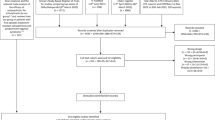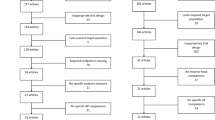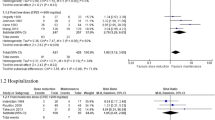Abstract
This safety assessment provides a detailed analysis of key studies and focuses on the six most widely used antipsychotic drugs. Lines of evidence include mechanisms of action, short-term treatment of psychosis, relapse prevention, early intervention in schizophrenia, long-term comparisons between first- and second-generation agents, and flexible treatment algorithms. Despite the diversity of study settings, several common features were seen. All the agents obstruct normal signaling through widely dispersed dopamine D2 receptors. Treatment failure or psychosis relapse was the most frequent outcome in most key studies, ranging from 38 to 93%. High discontinuation rates caused most trials to fail to demonstrate a substantial treatment benefit, or difference from an active comparator. Assessment of harm to the extrapyramidal motor system was confounded because of extensive neurological impairment from previous antipsychotic drug treatment measured at baseline, abrupt discontinuation effects, and high rates of concomitant medications to manage drug adverse effects. Claims that second-generation antipsychotic drugs have safety advantages over classical neuroleptic drugs and prevent relapse were not supported in these key studies. The extent of injury to and impairment of multiple body systems caused by antipsychotic drugs shows the need for a scientific, clinical, and regulatory reappraisal of the appropriate use of these agents.
Similar content being viewed by others
References
WHO Collaborating Centre for Drug Statistics Methodology. Anatomical Therapeutic Chemical (ATC) classification system: structure and principles. WHOCC. 2011. http://www.whocc.no/atc/structure_and_principles/. Accessed 9 Jul 2016.
Brunton L, Chabner B, Knollman B. Goodman and Gilman’s the pharmacological basis of therapeutics. 12th ed. New York: McGraw-Hill Education/Medical; 2011.
Baldessarini RJ, Cole JO, Davis JM, Gardos G. Task Force Report 18: tardive dyskinesia. Report of the American Psychiatric Association Task Force on late neurological effects of antipsychotic drugs. Washington, DC: American Psychiatric Association; 1980.
Lawrence RE, First MB, Lieberman JA. Schitzophrenia and other psychoses. Psychiatry Vol. 2. 4th ed. West Sussex: Wiley-Blackwell; 2015.
Nord M, Farde L. Antipsychotic occupancy of dopamine receptors in schizophrenia. CNS Neurosci Ther. 2011;17:97–103.
Bymaster FP, Calligaro DO, Falcone JF, et al. Radioreceptor binding profile of the atypical antipsychotic olanzapine. Neuropsychopharmacology. 1996;14:87–96.
Wadenberg ML, Soliman A, VanderSpek SC, Kapur S. Dopamine D(2) receptor occupancy is a common mechanism underlying animal models of antipsychotics and their clinical effects. Neuropsychopharmacology. 2001;25:633–41.
Kegeles LS, Slifstein M, Frankle WG, et al. Dose-occupancy study of striatal and extrastriatal dopamine D2 receptors by aripiprazole in schizophrenia with PET and [18F]fallypride. Neuropsychopharmacology. 2008;33:3111–25.
Nyberg S, Eriksson B, Oxenstierna G, et al. Suggested minimal effective dose of risperidone based on PET-measured D2 and 5-HT2A receptor occupancy in schizophrenic patients. Am J Psychiatry. 1999;156:869–75.
Kapur S, Zipursky RB, Remington G, et al. 5-HT2 and D2 receptor occupancy of olanzapine in schizophrenia: a PET investigation. Am J Psychiatry. 1998;155:921–8.
Sadock BJ, Sadock VA. Kaplan and Sadock’s synopsis of psychiatry: behavioral sciences/clinical psychiatry. 11th ed. Philadelphia (PA): LWW; 2014.
Kapur S, Remington G, Zipursky RB, et al. The D2 dopamine receptor occupancy of risperidone and its relationship to extrapyramidal symptoms: a PET study. Life Sci. 1995;57:PL103–7.
Kapur S, Zipursky R, Roy P, et al. The relationship between D2 receptor occupancy and plasma levels on low dose oral haloperidol: a PET study. Psychopharmacology. 1997;131:148–52.
Kapur S, Zipursky R, Jones C, et al. Relationship between dopamine D(2) occupancy, clinical response, and side effects: a double-blind PET study of first-episode schizophrenia. Am J Psychiatry. 2000;157:514–20.
Beaulieu J-M, Gainetdinov RR. The physiology, signaling, and pharmacology of dopamine receptors. Pharmacol Rev. 2011;63:182–217.
Mosholder AD. Review and evaluation of clinical data NDA 20-639 quetiapine fumarate seroquel. Silver Spring (MD): US Food and Drug Administration, Center for Drug Evaluation and Research; 1997.
Chuen MM, Dubitsky GM. Clinical review NDA 22-047 quetiapine fumarate sustained-released tablets. Silver Spring (MD): US Food and Drug Administration, Center for Drug Evaluation and Research; 2007.
Overall JE, Gorham DR. The Brief Psychiatric Rating Scale (BPRS): recent developments in ascertainment and scaling. Psychopharmacol Bull. 1988;24:97–9.
Leucht S, Kane JM, Etschel E, et al. Linking the PANSS, BPRS, and CGI: clinical implications. Neuropsychopharmacology. 2006;31:2318–25.
Simpson GM, Angus JWS. Modified Simpson-Angus Scale. Acta Psychiatr Scand. 1970;212(Suppl. 44):9–11.
Gharabawi GM, Bossie CA, Lasser RA, et al. Abnormal Involuntary Movement Scale (AIMS) and Extrapyramidal Symptom Rating Scale (ESRS): cross-scale comparison in assessing tardive dyskinesia. Schizophr Res. 2005;77:119–28.
Tarsy D, Parihar R. Tardive syndromes: clinical manifestations, pathophysiology, and epidemiology. Cambridge: Cambridge University Press; 2015. p. 195.
Arvanitis LA, Miller BG. Multiple fixed doses of “Seroquel” (quetiapine) in patients with acute exacerbation of schizophrenia: a comparison with haloperidol and placebo: the Seroquel Trial 13 Study Group. Biol Psychiatry. 1997;42:233–46.
Hoberman D. Statistical review and evaluation: NDA 20-639 seroquel (quetiapine). Silver Spring (MD): US Food and Drug Administration, Center for Drug Evaluation and Research; 1997.
Rexulti®. Brexpiprazole tablet prescribing information [package insert]. Tokyo: Otsuka America Pharmaceutical, Inc.; 2015.
Farchione T. Clinical review Brexpiprazole (Rexulti) NDA 205422. Silver Spring (MD): US Food and Drug Administration, Center for Drug Evaluation and Research; 2015.
Kordzakhia G. Statistical review and evaluation: brexipiprazole NDA # 205, 422/O-2. Silver Spring (MD): US Food and Drug Administration, Center for Drug Evaluation and Research; 2015.
Gilbert PL, Harris MJ, McAdams LA, Jeste DV. Neuroleptic withdrawal in schizophrenic patients: a review of the literature. Arch Gen Psychiatry. 1995;52:173–88.
Kasper S, Lerman MN, McQuade RD, et al. Efficacy and safety of aripiprazole vs. haloperidol for long-term maintenance treatment following acute relapse of schizophrenia. Int J Neuropsychopharmacol. 2003;6:325–37.
Chen Y-F. Statistical review and evaluation Abilitat (aripiprazole) tabs. Silver Spring (MD): US Food and Drug Administration, Center for Drug Evaluation and Research; 2002.
Csernansky JG, Mahmoud R. Brenner R; Risperidone-USA-79 Study Group. A comparison of risperidone and haloperidol for the prevention of relapse in patients with schizophrenia. N Engl J Med. 2002;346:16–22.
Schooler N, Rabinowitz J, Davidson M, et al. Risperidone and haloperidol in first-episode psychosis: a long-term randomized trial. Am J Psychiatry. 2005;162:947–53.
Jansen LH, Hojyo-Tomoko LH, Kligman LH. Editorial: drugs causing weight gain. BMJ. 1974;1:168.
Kahn RS, Fleischhacker WW, Boter H, Davidson M, Vergouwe Y, Keet IPM, et al. Effectiveness of antipsychotic drugs in first-episode schizophrenia and schizophreniform disorder: an open randomised clinical trial. Lancet. 2008;371:1085–97.
Lieberman JA, Stroup TS, McEvoy JP, et al. Effectiveness of antipsychotic drugs in patients with chronic schizophrenia. N Engl J Med. 2005;353:1209–23.
Stroup TS, McEvoy JP, Swartz MS, et al. The National Institute of Mental Health Clinical Antipsychotic Trials of Intervention Effectiveness (CATIE) project: schizophrenia trial design and protocol development. Schizophr Bull. 2003;29:15–31.
Miller DD, Caroff SN, Davis SM, et al. Extrapyramidal side-effects of antipsychotics in a randomised trial. Br J Psychiatry. 2008;193:279–88.
Rosenheck R, Perlick D, Bingham S, et al. Effectiveness and cost of olanzapine and haloperidol in the treatment of schizophrenia: a randomized controlled trial. JAMA. 2003;290:2693–702.
Jones PB, Barnes TRE, Davies L, et al. Randomized controlled trial of the effect on quality of life of second- vs first-generation antipsychotic drugs in schizophrenia: Cost Utility of the Latest Antipsychotic Drugs in Schizophrenia Study (CUtLASS 1). Arch Gen Psychiatry. 2006;63:1079–87.
Bakker PR, de Groot IW, van Os J, van Harten PN. Long-stay psychiatric patients: a prospective study revealing persistent antipsychotic-induced movement disorder. PLoS One. 2011;6:e25588.
Jin H, Shih PB, Golshan S, et al. Comparison of longer-term safety and effectiveness of 4 atypical antipsychotics in patients over age 40: a trial using equipoise-stratified randomization. J Clin Psychiatry. 2013;74:10–8.
Jeste DV, Maglione JE. Atypical antipsychotics for older adults: are they safe and effective as we once thought? J Comp Eff Res. 2013;2:355–8.
Acknowledgements
The authors thank Sonal Singh of the Johns Hopkins University School of Medicine for his comments and review of an earlier version of this manuscript.
Author information
Authors and Affiliations
Corresponding author
Ethics declarations
Funding
No funding was used in the preparation of this study.
Conflict of interest
Thomas J. Moore and Curt D. Furberg declare that they have no conflicts of interest relevant to this study.
Ethics approval
This analysis relies exclusively on published or publicly available data and is therefore exempt from institutional review board requirements.
Additional information
Disclaimer: The prescription information in Table 1 was obtained under license from the IMS Health Incorporated National Prescription Audit (2015). The statements, findings, conclusions, views, and opinions expressed herein are not necessarily those of IMS Health Incorporated or any of its affiliated or subsidiary entities.
Rights and permissions
About this article
Cite this article
Moore, T.J., Furberg, C.D. The Harms of Antipsychotic Drugs: Evidence from Key Studies. Drug Saf 40, 3–14 (2017). https://doi.org/10.1007/s40264-016-0475-0
Published:
Issue Date:
DOI: https://doi.org/10.1007/s40264-016-0475-0




